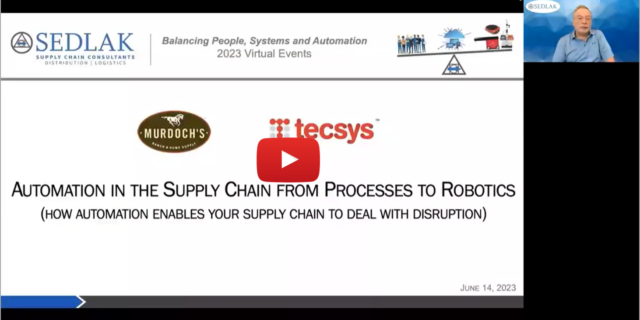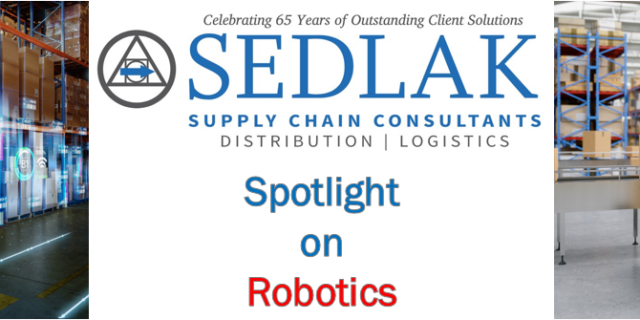Transportation Tipping Points in Healthcare Logistics
January 27, 2017 By: Senior Management | Topics: Healthcare, Transportation ManagementA decade or so ago, healthcare organizations managed logistics in an almost “out-of-sight, out-of-mind” manner – as long as products were available when needed, no one paid much attention. However, that is rapidly changing. Gartner's 2016 Healthcare Provider Supply Chain Outlook report found that healthcare companies are becoming more mindful of the total cost to serve, and placing greater emphasis on inbound freight and internal logistics as part of overall supply chain optimization.
Logistics spend can become a very significant cost for a healthcare organization, particularly when lax supply chain management results in a repetitive need for expedited deliveries to meet patient care requirements. It can also become an exponential headache for a healthcare company that is growing – either in terms of products or geographies (or both). The logistics model that served them well previously may no longer be the most cost effective.
Case in point: A Pennsylvania-based pharmacy management company that delivers medications to patients’ homes in a three-state region wants to expand its geographic reach into other parts of the country. Its traditional model was to ship everything via small parcel carrier from its packaging and distribution center in Philadelphia. While that probably worked for deliveries in Pennsylvania, Ohio and New York, it will be considerably more expensive to ship parcel to, say, Colorado or California.
Transportation costs are defined by volume – aggregating into larger volumes will result in lower costs. As healthcare companies grow and expand their business, it’s important for them to evaluate where their volumes are. There could be a tipping point at which the old shipping model no longer makes sense and another model should be considered.
In my example, it’s likely that the company shouldn’t exclusively direct ship medication via parcel carrier from Philadelphia to Mrs. Smith in Oakland, California. Based on the number of customers in that area, it may be possible to zone skip a group of shipments to San Francisco and then ship final mile to individual homes. Another option might be to consolidate by truckload all shipments headed west to Colorado and then cross dock to California, Utah and Arizona.
Many healthcare companies originate as entrepreneurial start-ups with a focus on product and patient outcomes. Logistics is treated as just a necessary evil and, unfortunately, many companies aren’t even aware of their shipping options. It’s not just a matter of cost. Managed properly, however, logistics can also be a differentiator if it enables a company to provide a better level of service that its competitors. High reliability, cycle time, safety, and visibility across the supply chain can all contribute to a competitive advantage.
Logistics providers such as UPS, FedEx and DHL have been ramping up their specialized capabilities to meet the specific needs of healthcare: warehouse spaces designed for pharmaceuticals, surgical devices and even human biologicals (e.g., blood samples); special packaging and refrigerated trucks; and technology to monitor shipments and track temperature, pressure, vibration and light exposure.
Bulk carriers are also paying more attention to healthcare industry needs. Temperature-controlled sea freight consolidation services are now available to the pharmaceutical industry at a substantial cost savings (up to 80%) compared to traditional air freight, with only a small tradeoff on lead times.
For growing healthcare companies, gaining a basic understanding of your actual logistics spend and its root causes can be an eye-opening experience. The Mayo Clinic has long been a gold standard for supply chain optimization, but prior to its use of data analytics in assessing supply chain costs, individual departments had limited visibility into shipping costs for the products they ordered.
Freight program manager Matthew Wood explained in an interview with Inbound Logistics that in a corporate culture of “just overnight it,” a department might spend 80 percent of its transportation budget on overnight service, then leave those shipments sitting on the dock for two days. By utilizing improved analytics and working directly with its key shipping partners, the Mayo Clinic Supply Chain Management group reduced inbound freight by 25 percent and improved freight visibility across the organization.
Ultimately, the business of healthcare is dynamic – a healthcare organization’s supply chain has to be dynamic, too.
Dennis Heppner has 20+ years of experience in transportation, logistics and supply chain operations, consulting and third party providers. Sedlak is an industry leader in supply chain strategy and distribution, with core services in logistics and a specialized practice in healthcare. To learn more, contact us by filling out the form below.







